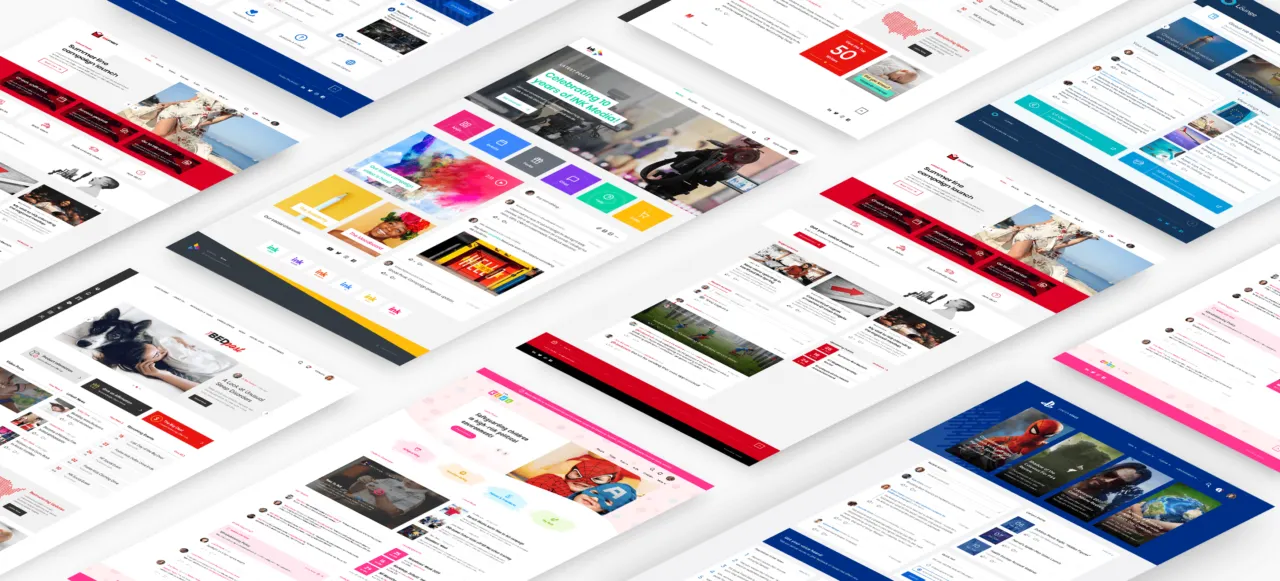What is an intranet? Over the years, intranets have evolved from static digital employee handbooks to sophisticated digital workplace solutions with substantial features and benefits. In this article, we cover the definition, history, features, and benefits of intranets.
Because intranets have so many different applications, their definition can seem complicated on the surface. Is an intranet a tool for connecting with coworkers? An internal communications platform? A knowledge base? A source of company information? A social media platform for companies?
If it’s implemented correctly, a company intranet is all of these.
In this article, we’ll define “intranet” for you and share the common features that make up modern intranet software. We’ll also delve into some history and cover the most important advantages an intranet can have for your employees and business processes.
Contents
Definition: What is an intranet?
Intranet definition
An intranet is defined as a private internal network that helps an organization’s employees communicate, collaborate, access information, and perform work-related tasks. Today’s intranet solutions help connect digital workplaces, serving to increase employee engagement and bring employees together across roles, departments, and locations.
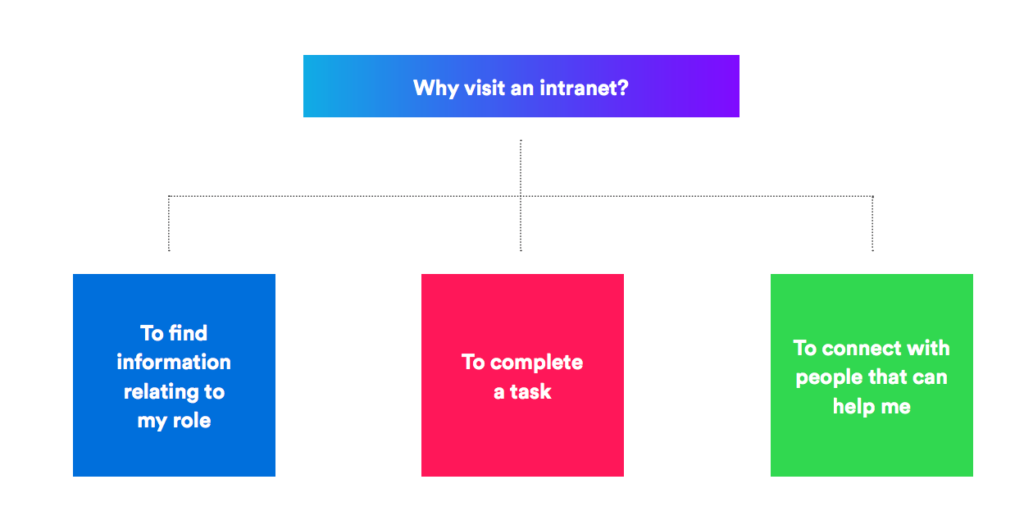
Intranets vs. extranets
When researching intranets, people often wonder about the difference between intranets and extranets. The main distinction is that intranets are used by an organization’s employees and extranets are used to facilitate collaboration and information-sharing with partners outside the organization.
Extranets can exist as standalone tools for third parties to interact with a company, but today they are often part of a company’s intranet. This arrangement allows for controlled access to a company intranet by authorized external users, including vendors, board members, suppliers, volunteers, or customers. This access can help companies keep business partners in the loop, provide customer support, enable collaboration, facilitate business processes like inventory management, and much more.
If the intranet is a private website that only employees can use, the extranet is those other webpages that provide access to a select group of users.
A history of the intranet
Intranets have come a long way since first creeping onto the digital scene back in the nineties. To understand the role they play today, let’s look back and see how they’ve evolved over time.

The pre-intranet era
Although intranets didn’t emerge until the nineties (see below), the business world had been laying their foundations for decades.
Information-sharing and collaboration have always been a challenge for organizations. It wasn’t too long ago that crucial company knowledge was stored in files and had to be communicated by bulletin board, phone, fax, or mail. Imagine the logistics for a global business with hundreds of branches and locations. This was the reality for decades, but gradual improvements along the way paved a path forward for intranets.
Computers were first used for business communication in the 1970s. Email technology, pioneered by the US Department of Defense, was developed and has become standardized over the following decades.
During this time, companies also began using Local Area Network (LAN) connections to connect workers and documents. Ethernet was among the most popular and emerged as a leading solution, connecting computer-based workers and files in a practical way for the first time. Xerox was the first to develop an ethernet for business purposes in 1973, and by the early eighties, LANs and ethernets were common at companies that used computers to do business.
In 1978, Eric Schmidt created Berknet, the first network that allowed for computer-to-computer communication, and what some argue was the earliest iteration of an intranet. The ways we communicated at work were growing by leaps and bounds, but this was just the beginning of workplace technology optimization and development.
Discover how to plan and implement a modern intranet with our complete guide.
1990s: The early intranet
In the early nineties, the launch of the World Wide Web changed everything. The internet had been around for over a decade at this point, but it was the Web that allowed businesses to create sites specifically geared for their employees, known at the time as Enterprise Information Portals or Corporate Information Retrieval Systems. These rudimentary intranets, built internally and specific to the companies they were used at, began to crop up between 1993 and 1996.
Early intranets were top-down, simple, and static in comparison to today. An intranet was often as basic as a welcome page with access to essential company information, such as digitized employee handbooks and contact information.
Some also highlighted company news, acting as a virtual bulletin board or corporate newsletter. These intranets required someone with technical know-how to make updates, and their appearance was flat and wordy, with plain text and blue hyperlinks.

In 1996, the first intranet software arrived on the scene. Frontier Technologies released Intranet Genie, a pre-built solution that helped companies provide their employees with centralized access to information.
Intranet Genie looked different from today’s intranets, however, in that it was a suite of several applications that worked together and was installed on company servers and employee computers rather than accessed through the internet. Intranet Genie was an enormous first step for intranet software, but it proved difficult to install and update, and wasn’t user-friendly.
In the mid-to-late nineties, other intranet software entered the picture. Intranets, whether ready-to-use like Intranet Genie or built in-house, became slightly more sophisticated, featuring basic document management and messaging capabilities.
By the end of the decade, most intranets were already launching features that allowed employees to interact with intranets rather than simply navigate and read company information.
2000s: Dynamic, efficiency-boosting features
In the early 2000s, computer and internet use skyrocketed—by 2003, more than half of all workers were using computers in their roles. As technology continued to develop at a rapid pace, intranets evolved to feature improved communication and collaboration tools.
Help-desk features were introduced throughout the decade, enabling users to perform transactional processes such as submitting a ticket for a technology issue or scheduling PTO. Giving employees the power to complete tasks on their own with self-service lightened the load for departments such as HR and IT, and showed the intranet’s potential for creating more efficient workplaces.
Internet search was taking off during this period, and intranet searchability followed suit. Company intranets deployed better search features, allowing employees to find the information they needed more quickly and effectively.
By the end of the decade, intranets were almost solely accessed using the internet rather than local software, and the types of activities employees could engage in on their intranets continued to grow.
By 2010, intranets had fully turned the corner from static to dynamic, giving companies the option to integrate more forms, surveys, and other features. Intranets were also beginning to align with brand identity, and their focus expanded from providing need-to-know info to delivering content that actively reinforced company culture.
2010s: Social and conversations
Culturally, the 2010s were all about social media. Recognizing the value of these tools, many intranet providers began to integrate social functions, including blogging tools, wikis, and discussion forums. Once a place for top-down communication, intranets were now an employee-centric destination for conversations and engagement. By this time, intranets had gradually evolved to reflect company brand and identity. User experience and appearance were better than ever, and getting closer to the intranet we know today.
During this time, intranets also upgraded existing document management features with new cloud-based integrations. New collaboration features like intranet communities launched, giving teams, departments, and like-minded colleagues virtual spaces to come together for discussions and idea-sharing.
Intranets today: Employee experience, personalization, and AI
To adjust to the dramatic changes in the nature of work in recent years, intranets have become far more advanced. They now enable companies to provide highly personalized digital experiences that support an excellent employee experience throughout the employment lifecycle.
Social-inspired changes to intranets have continued over the past several years. Intranet people profiles have gotten dynamic, interactive upgrades. An array of new social features such as mentioning, tagging, commenting, and sharing have become popular, encouraging users to create and engage with company content. Activity streams provide real-time insights and information, while increasingly sophisticated algorithms and data analytics allow for greater personalization, pushing recommended content to users.
User experience is given greater focus and investment, with developments in intranet design, accessibility, performance, and user journeys. With the number of applications in use today, building an effective employee portal also relies on integration with other applications.
Today’s intranets serve as centralized gateways to the digital workplace and facilitators of the digital employee experience. With an increasingly dispersed workforce, intranets must support and engage in-office, remote, on-location, and hybrid workers simultaneously. When deployed correctly, a company’s intranet helps all workers communicate, collaborate, access crucial information, complete tasks, and thrive at work.
Although intranets have seen huge strides in a relatively short time period, advancements in AI and other areas are happening continually. Not all intranet solutions are the same, however, so it’s important to ask the right questions when selecting new intranet software.
Discover how to plan and implement a modern intranet with our complete guide.
What are enterprise intranets used for?
In today’s digital workplace, intranets boast a vast range of functionality, allowing them to serve a variety of intranet use cases.
When selecting an intranet solution, organizations should start by defining their own intranet needs, strategy, and desired outcomes. Not every intranet use case will make sense for every company, but we’ll cover some common purposes an intranet is used for below.
- Information sharing: Intranets provide a centralized access point for an organization’s information. This encompasses static company policies and employee information such as PTO info, IT guidelines, org charts, a list of company holidays, and rules around expensing travel costs. This information should be easy to find or search for—if search functionality is poor, users won’t find information quickly enough and your intranet won’t serve its purpose. Intranets are also a source for evolving information (such as communications), typically featuring a content management system (CMS) that allows authors to create, update, and manage intranet content. It can also integrate with document management systems (DMS) to centrally surface documents for easy employee access.
- Internal communications: In addition to giving administrators the ability to share content and updates with employees, an intranet facilitates effective two-way communication between management and staff via blogs, forums, and discussions. The bidirectional nature of these tools means intranet administrators can make top-down announcements, and users can ask questions of the company in a public forum.
- Connecting a company’s people: Connection and collaboration are crucial to productivity. Global and dispersed organizations in particular need to be strategic about how they connect their people. An intranet provides tools that help employees engage, have discussions, and come up with new ideas together, whether they’re working on separate floors or separate continents. A good intranet will make this type of connection easy with features like digital communities, social features, and enhanced user profiles to get to know coworkers better.
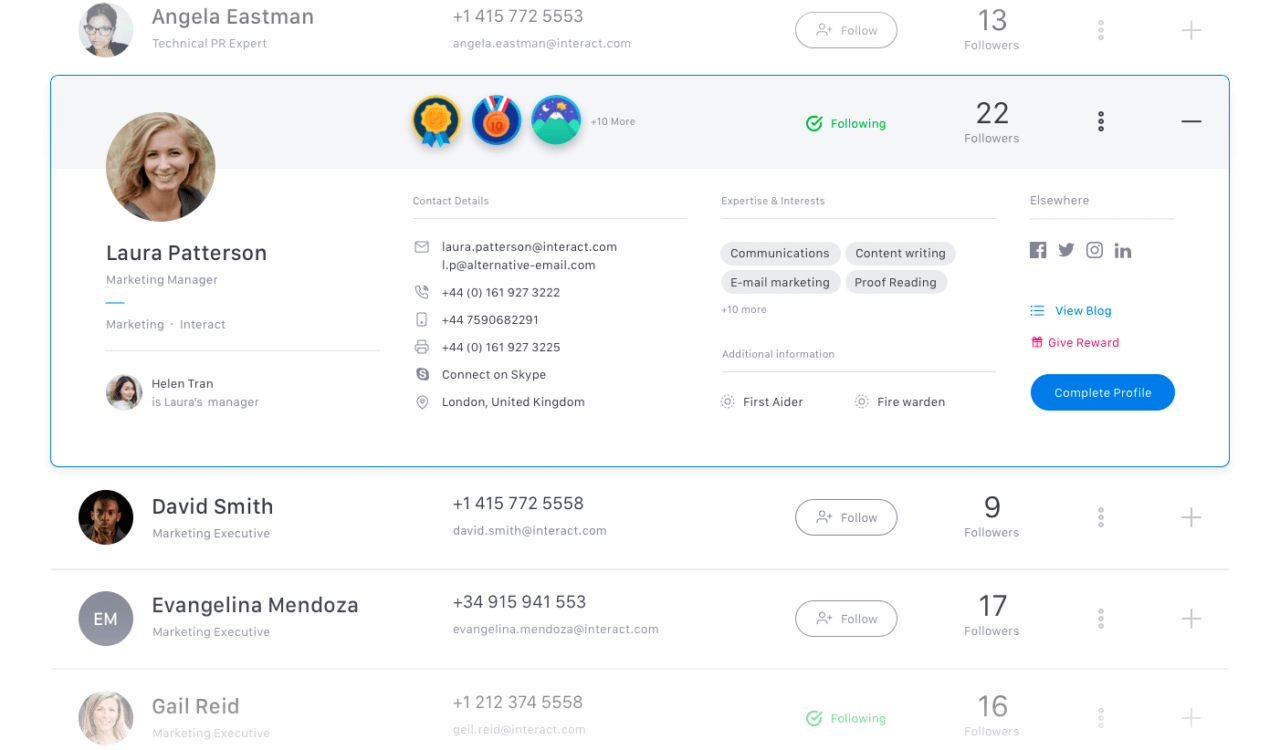
- Employee lifecycle management: With the ability to present tailored content and permissions management, intranet HR functions can be effective tools for preboarding and onboarding new employees. Creating an exceptional employee experience right off the bat is more important than ever, with companies experiencing a 20% average turnover rate in the first 90 days. In a broader sense, intranets can help employees get up to speed faster, with information about coworkers, company values, policies, and more right at their fingertips.
- Organic knowledge-sharing: Alongside formal information and documents, employees themselves are a vast repository of knowledge. Through intranet forums, discussions, comments, and team pages, this knowledge can go from individual to company-wide. Employees can share tips or ask questions to tap into their peers’ know-how. Best of all, knowledge is captured and retained on a searchable platform, even after contributing individuals have left the organization.
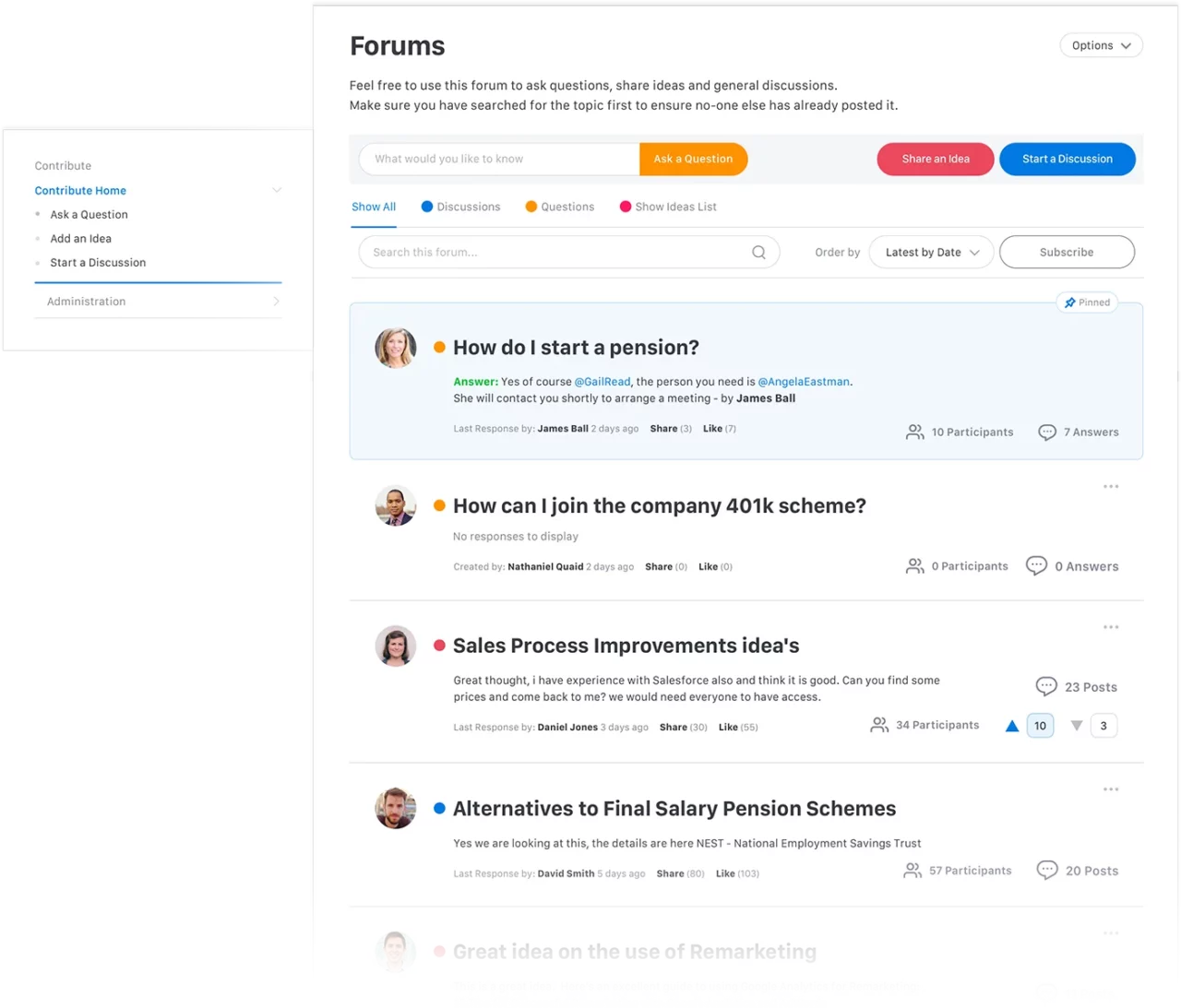
- Task completion and workflows: Combining forms or transactional applications with hosted information, intranets enable employees to self-serve and complete common processes such as booking PTO, submitting expenses, or participating in internal training programs. Giving employees the power to complete tasks on their own streamlines processes and reduces workload for everyone involved.
- Measuring and improving employee engagement. Engagement has a critical impact on employee retention and business performance—yet it presents one of the greatest challenges for business leaders. With the introduction of integrated pulse survey tools to measure employee sentiment, intranets can give organizations a better idea of how they’re doing on engagement. Intranets also boost engagement by giving staff a voice and sense of belonging through forums, blogs, social features, and other communication tools. These social interactions are yet another way companies can keep a close watch on how employees are feeling and determine if changes need to be made to boost engagement and satisfaction.
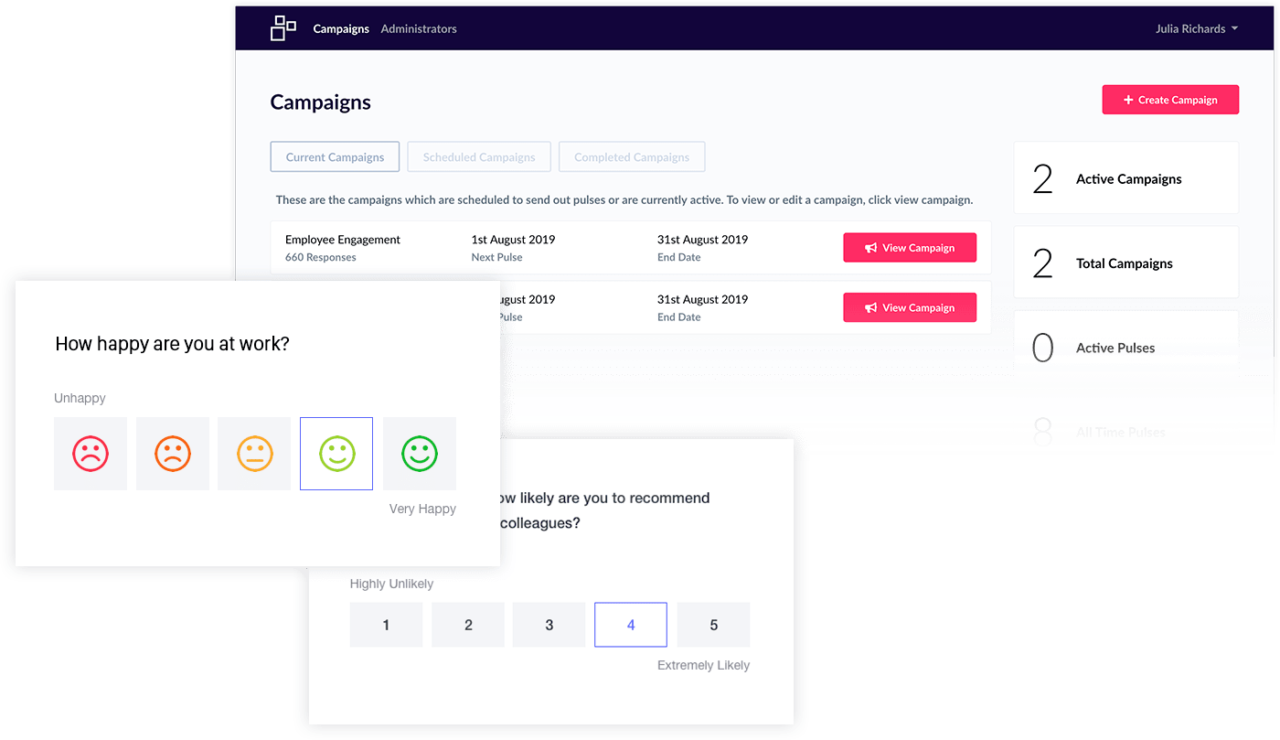
- Celebrating brand identity and company culture: Intranets can play an active role in building, embedding, and communicating a strong company culture. Having a clear brand and values gives your employees a sense of ownership over their work. Celebrating company-wide, departmental, and individual accomplishments makes people proud of where they work. A company’s intranet can serve as the setting for this culture-building and employee celebration.
Popular intranet features
Intranets need certain capabilities to facilitate communication, provide access to information, and support task completion. Although intranet features and functionality vary according to provider or build, there are some common things you should look for when choosing an intranet for your company.
Discover how to plan and implement a modern intranet with our complete guide.
Communication, collaboration, and community-building features
Some of an intranet’s most important features involve two-way, instantaneous communication. As we’ve covered above, multidirectional communication helps companies thrive, and an intranet can support this. Common features in this category include:
- User profiles featuring rich, dynamic information about employees and often integrated with external profile sources such as Azure Active Directory.
- Informative content areas and an intuitive system for authors to manage them.
- Employee-facing updates, news, and alerts that broadcast internal comms to the right people at the right times.
- Forums and discussion capabilities thatoffer an intuitive, informal medium for questions, collaboration, and ideation among employees.
- Communities dedicated to specific departments, projects, or common interests; where grouped individuals can engage, share ideas, and collaborate.
- Onboarding and enrollment tools that welcome new employees and allow them to hit the ground running by checking off essential tasks, sharing need-to-know info, and building employee engagement from day one.
- Blogging and social interaction features such as the ability to mention users and like, share, tag, or comment on intranet content.
- Digital signage, to bring the benefits of your intranet into the physical workplace.
User-experience features
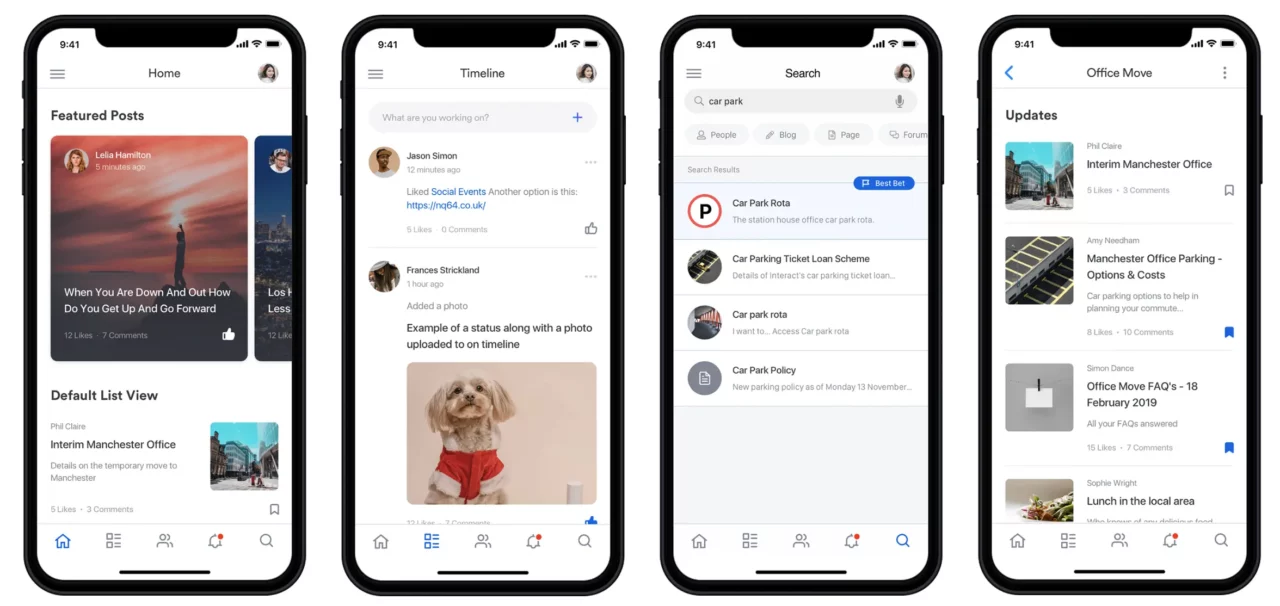
Another thing to keep in mind when it comes to selecting your intranet is user-experience features. User experience has improved across your employees’ personal devices, and they’re accustomed to intuitive technology that works every time. If your intranet user experience isn’t up to par, people won’t use it. User experience intranet features include:
- Mobile app options for quick, easy access on-the-go and the ability to “push” crucial information to employees.
- Responsive intranet sites that are optimized for access across multiple devices.
- Integrated searchability that makes it easy to locate important resources throughout your intranet.
- Automated translation to connect a global workforce.
- Pulse surveys and employee feedback mechanisms that consistently evaluate sentiment, engagement, and areas for improvement.
- Analytics to help you benchmark performance, understand your audience, refine experiences, and measure your intranet’s ROI.
- Advanced permissions to control what information is displayed to which users.
Security and connectivity features
In today’s digital workplace, it can feel like there’s a different tool or application for every task, department, and role. Completing work across multiple systems that don’t talk to one another can result in a duplication of effort, lost or outdated information, and poor employee—and customer—experiences. An intranet must work seamlessly within and alongside existing and future business tools and applications rather than operating as an isolated, closed platform.
Multiple applications requiring different logins and passwords can make for a clumsy, time-consuming experience—not to mention that 80% of security breaches are caused by password issues. Integrating the intranet with other business systems can allow employees to choose one secure password for all their business needs, reducing vulnerability.
Intranet security and connectivity features include:
- Comprehensive security features and testing that keep your information secure, covering everything from data encryption to compliance certification.
- SSO or other authentication methods for secure employee access.
- Third-party integrations for applications like cloud-based storage, communication tools, calendars, HR software, and productivity tools.
What are the benefits of intranets?
As we’ve already explored, an intranet can wear many hats within an organization, serving a broad range of communities, departments, and objectives. The benefits of an intranet are just as numerous, but there are several overarching advantages.
- Increased productivity
- Improved communication and connection
- Higher levels of employee engagement, with decreased staff turnover
- An enhanced employee experience, starting with preboarding and onboarding and continuing through the entire employee lifecycle
- Better customer service
- Savings on time and resources
- Greater company-wide collaboration, resulting in higher levels of innovation, productivity, and effective problem-solving regardless of role or location
- A strengthened company culture with greater visibility of mission, vision, and values
- An efficient, user-orientated technology stack that improves experience and reduces the number of apps and tools that employees use
- A single, visible platform for internal comms to share company information and promote important initiatives such as DE&I
The depth and breadth of these benefits show how the role and definition of the intranet has evolved to encompass so many aspects of employee experience and company bottom line. An intranet is an invaluable investment for organizations, and selecting the right solution for your company will deliver an enormous return on investment.

